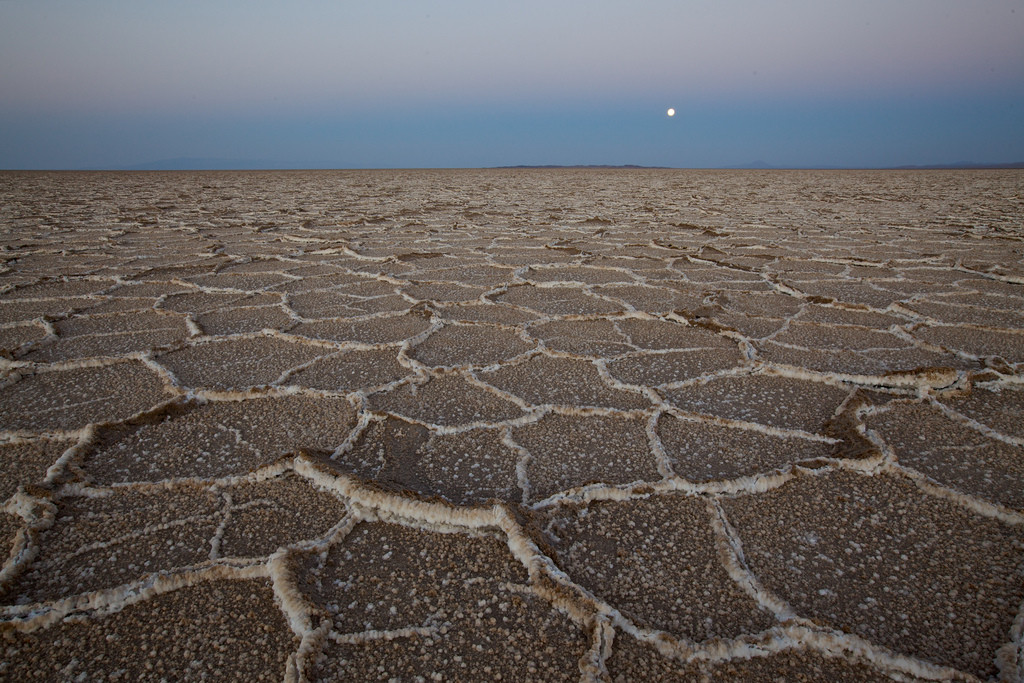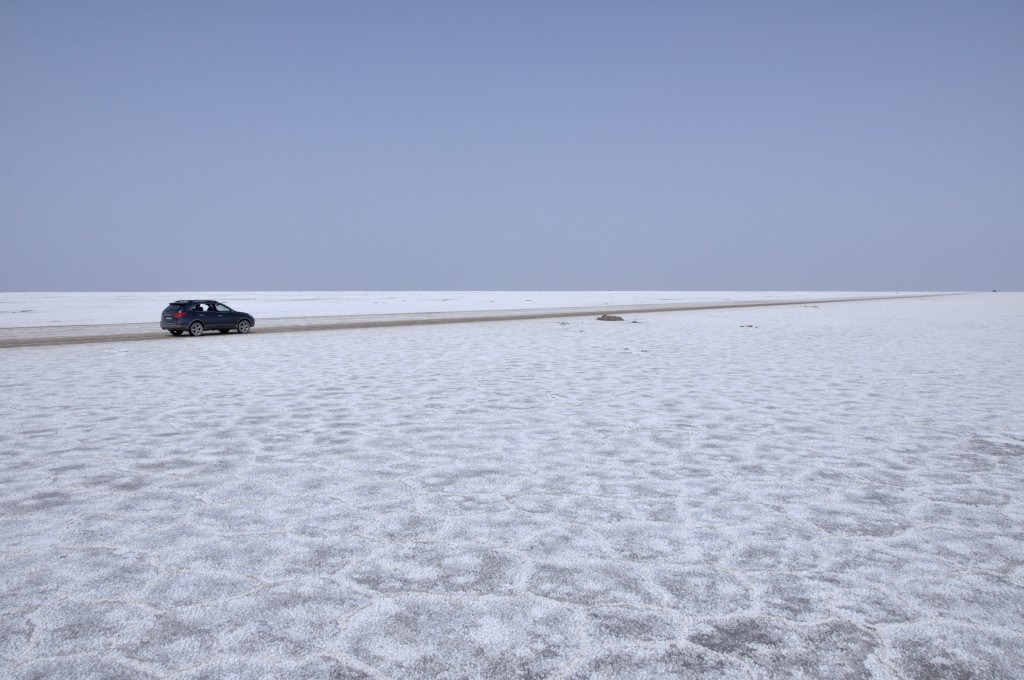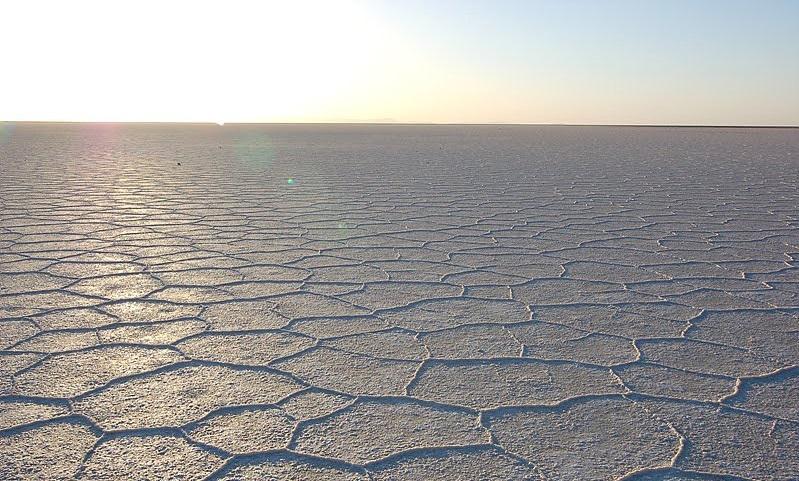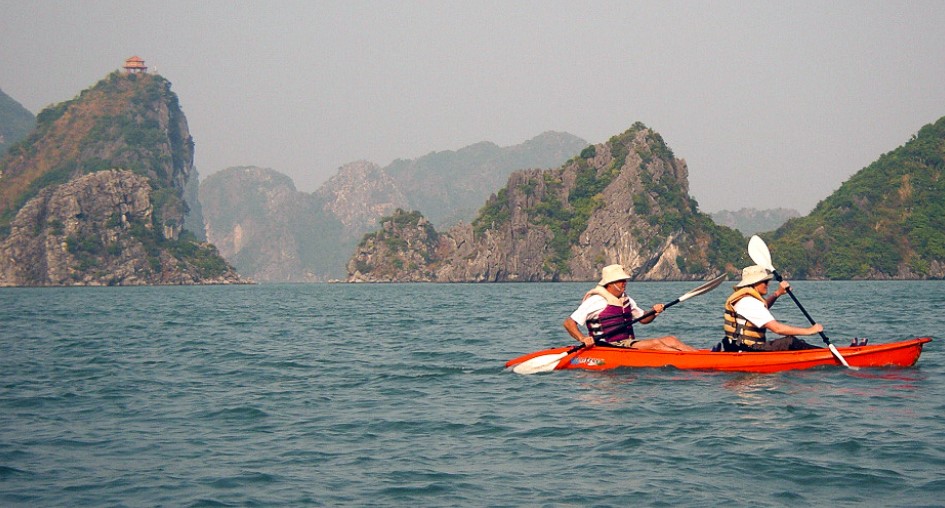Namak Lake, also called Salt Lake, is located about 100 km east of the city of Qom in Iran. The lake is at an elevation of 2,590 feet above sea level. Namak Lake has a dry surface only water covers about 1800 km2 area. The lake depth is between 45 centimeters and 1 meter, and a major source of water supply is the river Qom.
The Namak Lake is actually a remnant of the Paratethys Sea. Which is underway to dry from the Pleistocene epoch, leaving Lake Urmia, the Caspian Sea, and other bodies of water. The climate condition is semi-arid and arid, and more moderate in nearby mountains. Therefore, the mean annual temperature is 13.5 °C, with mean minima averaging -6 °C and mean maxima averaging 35 °C.
Moreover, Namak Lake holds 240 million metric tons of minerals. It is believed that Iran’s Namak Lake contains a rich lithium deposit; extracting 40 grams of lithium per ton is considered economically justified worldwide. Moreover, a massive volume of sodium sulfate deposits—144 million tons—has been discovered in the lake.
Therefore, three minerals, namely Magnesia, Halite, and Sylvite, have been identified so far in the lake. With estimated reserves of 32 million tons, 200 million tons, and 4.5 million tons, respectively, these minerals are used in the agriculture, steel, and aluminum industries.
Namak Lake is accessible by sandy road and a bit far from civilization and the city. This place is specific for its minimal light smog. It is grotesque to watch stars here, and even perspective photographs or skateboarding on a silky, salty surface is possible. The surrounding area of the lake is semi-desert, mainly rock with sand.
Moreover, vegetation cover is sparse, and foothills and wide valleys are characterized by forest steppe. Hence, higher areas are well covered with snow in winter, along with some permanent ice fields and alpine vegetation. The main fishes comprise three families: Balitoridae, Cyprinidae, and Salmonidae.
Thus, native populations of trout (Salmo trutta) occur in the basin, and some basins and other water bodies have been stocked with exotics, or exotic species have been acquainted with fortuitously. This ecoregion contains a high degree of endemism in a species-poor endorheic basin.
Also Read: Thilafushi: A Garbage Island of Maldives
Source: Wikipedia










